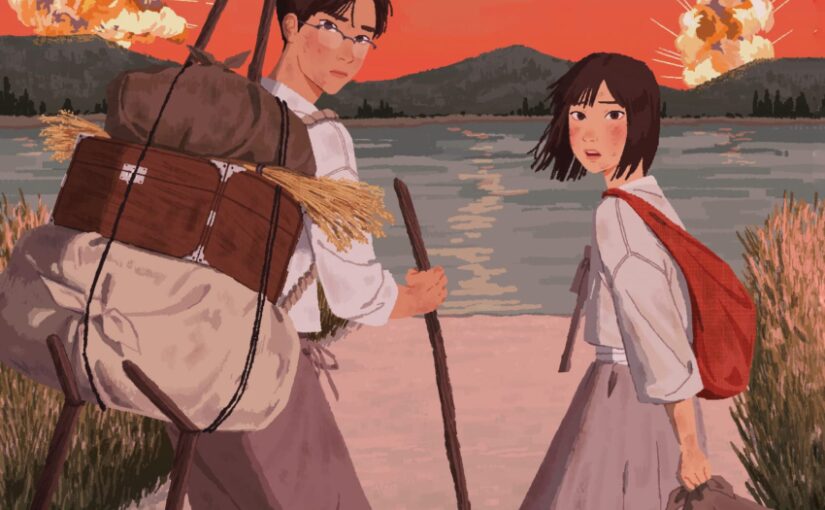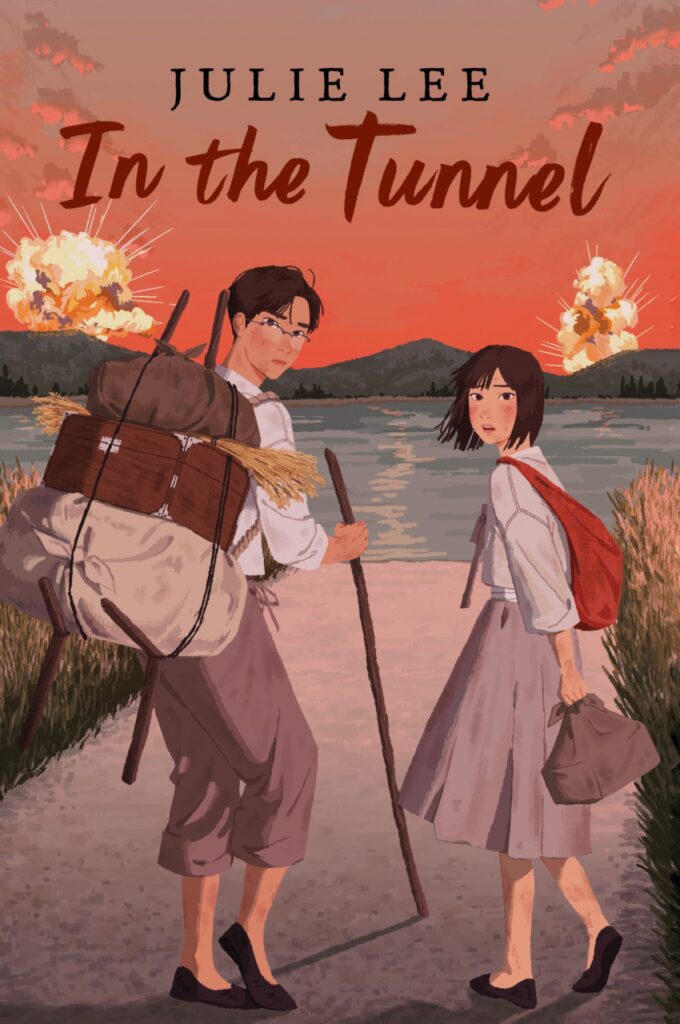There is a reason that people read different types of genres. If you read stories that roughly revolve around the same characters or situations that you’re used to then your perspective will never expand or be challenged. Don’t misinterpret that sentence. By “challenge” I mean “to grow” or expand what you think that you know, and not to confront or bicker merely for the sake of argument. Granted, some books will certainly troll or bait folks into circular conflict, but literature like that is easy to spot. Into the Tunnel is realistic fiction that “challenges” mglit readers in just the right way.
It’s approachable and a rare book for two reasons. First up is that getting middle and high school readers to read realistic fiction is challenging. Those older readers have lots on their plates and reading for leisure is not their number one priority, I get it. When I encounter students like that I remind them that reading is a great way to cleanse the mental palate and to relax. It’s not teaching or trying to be educated about something, it’s relaxing. Those ages who have learned that lesson sometimes get stuck in a reading malaise of only reading the same author or genre. To those readers, I suggest that they’re encouraged to stay on that path but to take the blue pill from time to time.
Into the Tunnel takes place in North Korea in the days just before the Korean War. I know, most middle school students won’t learn anything about the Korean War and most high school students will do so in an advanced class and under duress. This is the aspect of realistic fiction that’s paired with an approachable, patient, and thorough lens by the author, Julie Lee. In a way, Into the Tunnel benefits from the fact that a vast majority of its readers will know very little about the subject matter.
The book starts out with our main character, Myung-gi about to die. At least, he thinks he’s about to die, the area around him is being shelled, the Earth is exploding around him, all but liquefying into a downward ride of rocks, sticks and various military supplies. It deposits him into a concrete bunker that’s then promptly sealed off by the same flow that put him there. He’s 16 years old at the time. The next chapter starts off with Myung-gi with his family two years earlier when he’s 14.
Literary devices like this aren’t always effective, but in In the Tunnel, it’s a great way to discover the crux of the plot in a way that naturally encourages readers to dig deeper. Because the action in the first chapter happens so quickly readers will wonder why and how his situation got so dire so quickly. They’ll ask themselves what happened to his family and those really clever readers will wonder what they’d do if they were placed in the same circumstances as him.
Most of the chapters in the book go back and forth in time like that, with every other chapter sometimes offering up a nugget of information as to what’s about to happen. Prior to the full-on start of Korea’s aggression against its people, those who were aware of its possibility were carefully making plans. This included quick routes of escape and the best ways to get to the south or major metropolitan areas as fast as possible.
Myung-gi’s father is a principal at the local school which is a safer job than most, but still has risks. His children loved to read and he was a big fan of education, so he’d smuggle books from work to home. However, as the communist presence got stronger in the northern parts of Korea their rights started to decrease. His family, especially Myung-gi, loved to read, but knowledge and the ability to have books to consume was one of the first things that was taken away. One day his father was taken away by the secret police and the family’s escape plans had to be enacted immediately. A young Myung-gi felt responsible for his father’s disappearance and the escape to a hopeful southern safe house was fraught with danger and uncertainty.
The chapters in In the Tunnel are short, ranging from four to six pages. It’s that brevity that builds tension as the communists gain control, Myung-gi’s family tries to escape, his joining the South Korean Army, and his being buried in a tunnel that started the novel. The how is established very quickly, leaving they why to be told during the book. It’s the fact that the why is told in such a nice, stair-stepped manner that builds tension and curiosity that makes the book an engaging read for those who might otherwise get nowhere near a realistic fiction, historical book.
In the Tunnel is by Julie Lee and is available on Holiday House and distributed by Penguin Random House.
There are affiliate links in this post.






 Facebook
Facebook Twitter
Twitter Flickr
Flickr GooglePlus
GooglePlus Youtube
Youtube